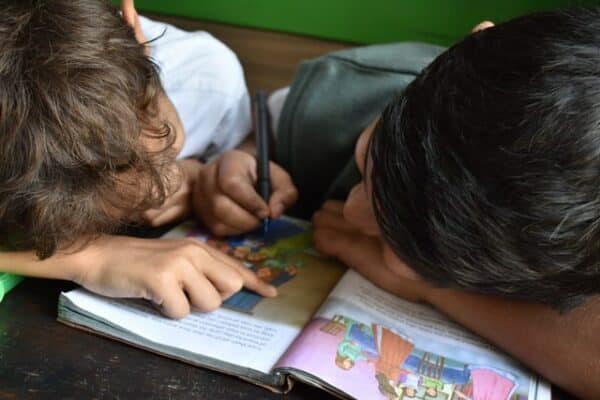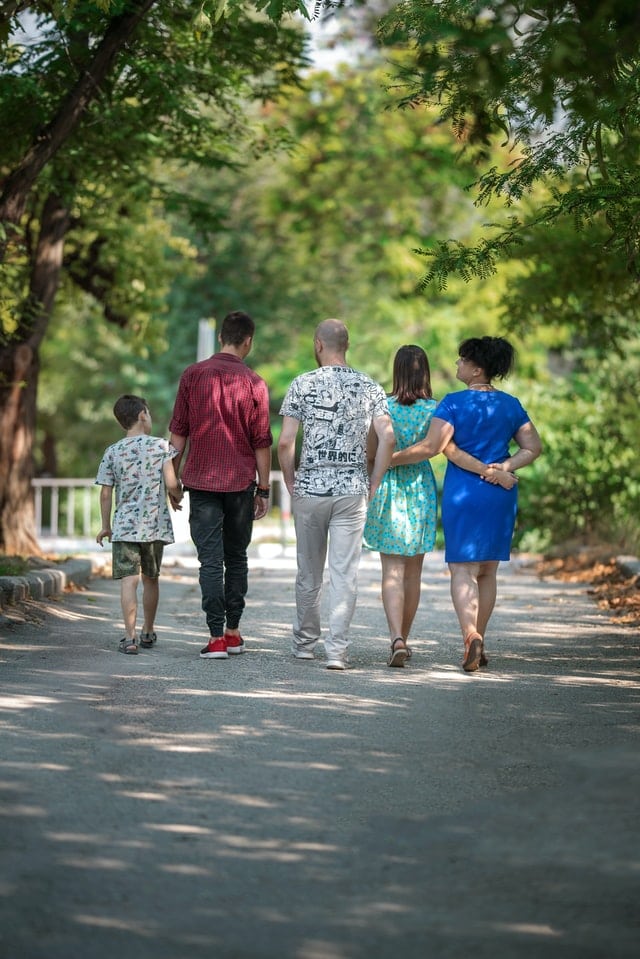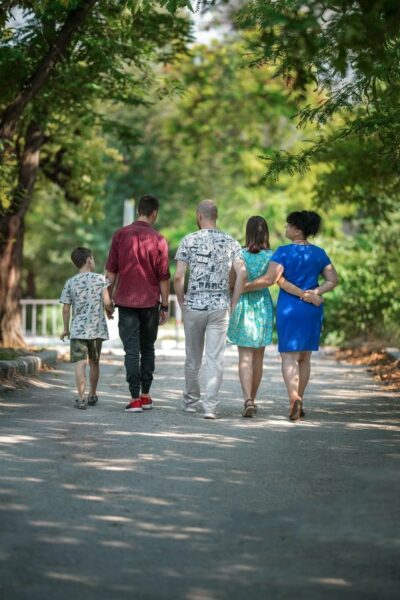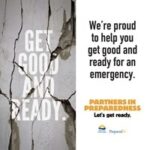How to Talk To Your Children About Disaster Preparedness
Preparing for disasters might seem like a normal part of life for adults living in high-risk areas. To some extent, we understand what might happen during an earthquake or tsunami and can plan accordingly. But what about our children? How can we prepare them for disasters while giving them age-appropriate information?
Kids are curious about the world around them, but can be highly sensitive to alarming news and information. So the question is, what exactly is the best way to talk to children about disaster preparedness without instilling in them a permanent fear of such situations?

Photo by Andrew Ebrahim on Unsplash
Talking to Children about Disasters
Children aged 13 and under are usually more sensitive and less bold when it comes to scary situations. Give them relevant, matter-of-fact information. This can include what physically happens during a disaster such as an earthquake, tsunami, flood, storm, wildfire, or disease outbreak. PreparedBC’s website has excellent information about these and other risks.
Here at Total Prepare, our motto is “Be Prepared, Not Scared.” Preparation comes in two parts: having the facts and knowing what to do.
Here are a few talking points to help you prepare for a conversation with your kids:
- What are natural disasters?
- How can they compose themselves in such situations?
- What is actually happening behind the scenes when a natural disaster strikes?
- Who will be there to help after a natural disaster?
Talking to them like this will give them confidence and prepares them mentally. Moreover, try to comfort them and ask how they’re feeling about what you are telling them. Letting them express themselves and listening to them helps destress. As a result, they will be able to deal more readily with an alarming and traumatising situation.
Secondly, try to shield them from adult conversations, violent imagery, and the graphic aftermath of disasters on news and social media so that they don’t get scared or traumatized. Make sure to keep your cool in front of them as much as you can. It’s okay to admit to being scared, but show them that they don’t have to feel helpless.
Talking to Teenagers about Disasters
Teenagers tend to be more outgoing and take more risks. They want to be treated like adults and will do anything to prove their maturity, and are in the middle of developing critical thinking skills.
The best way to teach such teenagers about disaster preparedness is to provide detailed information about disasters and recovery efforts. Ask them what they already know, and help them find information about what they don’t. Encourage them to ask questions by coming up with a few questions yourself—they’ll be much more likely to tell you what’s on their mind if they know they won’t be made fun of.
Moreover, help them understand that they will have an active role in helping out during a disaster. Although their responsibilities don’t have to be significant, just letting them feel like you trust them can make a world of difference to them.
Some of these responsibilities may include:
- looking after younger siblings
- keeping things organized at home
- making sure to check there are enough supplies
- lending a helping hand to adults
As with kids aged 13 and under, going over your emergency preparedness plan will help them remain calm and take appropriate action in an emergency.
What Can Kids Do During a Disaster?
Kids have untapped potential for doing good and giving back, which is often shrugged off just because they are children. How can kids contribute during a disaster, and how can parents best utilize their potential?
Be a Role Model
Whether you realize it or not, your kids will observe you closely for your reactions to difficult times and will naturally follow suit. The best way to enhance that natural tendency in kids is to show them how being compassionate, confidently handling responsibility, and looking after your family is the best thing they can do at any time—and especially during an emergency.
Teach Through Storytelling
In addition to your actions, teach your kids about compassionate people, selfless heroes, and stories of how people overcome hardship to instill a sense of responsibility that will subconsciously reveal itself when something terrible happens.
This can be done in a number of ways, like reading books, watching movies, and telling stories that revolve around such themes.
Share the Responsibility
As adults, we tend to think that kids don’t have the right skills to make a difference, hence they shouldn’t be given any responsibilities. This mindset is not only damaging to their development, it also does society a disservice. By giving your kids responsibilities appropriate for their age, you’re telling them: ‘I trust you to look after your family and your loved ones.’
Doing this benefits kids in two ways.
Firstly, it makes them responsible, confident, and brave. When you have a responsibility to handle, you rarely think about yourself because people are relying on you.
Secondly, it takes their attention away from being scared or getting stressed out. Naturally, when they feel like they are looking after their family, it gives them an ego boost that multiplies their mental strengths, such as composure and confidence.
Responsibilities should be a regular part of their lives before a disaster strikes. These can be as simple as folding laundry, filling water bottles, checking the locks, closing blinds, etc.
How can parents work with their children’s school to prepare?
Schools are a great place to teach children about disaster preparedness. Collaborate with them to make sure your kids learn about disaster preparedness.

Photo by Amy Hirschi on Unsplash
Understand the curriculum and what your children are learning about different natural disasters, why they happen, and how damaging they can be. Keep up with the latest trends, research, and best practices involved in disaster preparedness. Joining the school’s PAC will give you the opportunity to make your voice heard. Advocate for free preparedness programs such as Master of Disaster. Prepared kids are much easier to handle during an emergency than scared kids, especially when there are hundreds of kids in one place
As a parent, you can ensure that the school holds regular fire, earthquake, and other emergency drills. Have your kids what they have learned—you might even learn something too!
How people conduct themselves when calamity strikes will determine how successful subsequent emergency responses are. Schools can train children to keep calm, be aware and alert, be confident, and be brave in times of natural disasters with the help of workshops and lectures by emergency preparedness professionals such as first responders. Being prepared mentally is just as important as physical preparedness.
We have a list of resources for back-to-school preparedness here.
How often should you review family emergency plans?
Your disaster preparedness is as good as what you have planned for it. What should be included in your emergency plan?
Firstly, depending on where you live, learn about what kind of disasters you and your family are most at risk for, and then plan accordingly. Keep the right supplies on hand and make sure everyone in your family knows where they are.
If you move to a new place, you must review your plan according to the type of disaster most common to that area.

Photo by Tierra Mallorca on Unsplash
Secondly, create an evacuation plan that everyone in your family knows and can practice together. It should include two outside meeting places: one right outside your home and one a short distance away, such as a library or police station. In case your family gets separated, the first meeting place should be the spot near the house. If the first location is unsafe, then every family member should know how to reach the second emergency meeting area. Naturally, moving to a different home means reviewing and setting new emergency points for the family.
Lastly, keep all important contact information in an easily accessible place. These might include numbers for your kids’ school, your work place, family members, emergency service numbers, and an out-of-town contact who is unlikely to be affected by local disasters.
We recommend reviewing your plan every couple of months and update any information that is no longer relevant.
Final Word
When a disaster strikes, what matters most is keeping your family and your loved ones safe. Teaching your kids about disaster preparedness is one way to ensure their safety. Preparation will help them face any emergency bravely and confidently. It is a gradual process that should be tweaked depending on the age of the children, but it pays off in the long run.
This guest post was written by emergency preparedness writer Shahraz Ali with locally relevant additions by the Total Prepare team.








